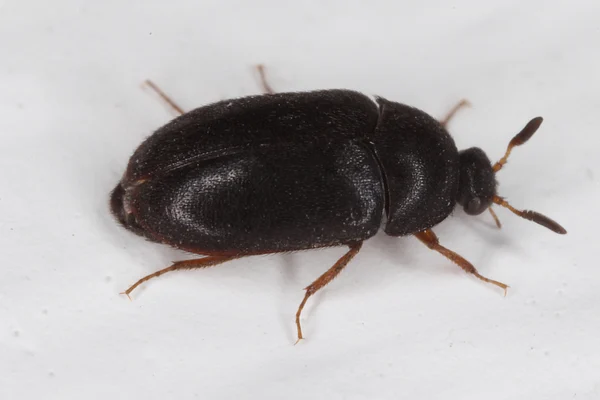Tiny Terrorizers: Unveiling the Mystery of Those Specks of Dirt That Move
Have you noticed a sudden influx of tiny black bugs that resemble specks of dirt scurrying across your floors, walls, or furniture? These unwelcome visitors can be a nuisance, and identifying them is the first step towards effective eradication. This guide delves into the world of common tiny black bugs found in homes, exploring their characteristics, potential causes of infestation, and strategies for eliminating them.
Candidates for the Critter Caper: Likely Culprits in Your Home
Several tiny black insects can infiltrate your home, often mistaken for dirt at first glance. Here are some of the most common culprits:
-
Gnats: These tiny, flying insects with long legs are most likely fungus gnats or phorid flies. Fungus gnats thrive in moist environments and feed on decaying organic matter in houseplants or damp soil. Phorid flies, also known as drain flies, breed in moist areas near drains and garbage disposals.
-
Spider Beetles: These minute, flightless beetles resemble tiny black spiders. They are attracted to moisture and organic debris and can be found in kitchens, bathrooms, and basements.
-
Booklice (Psocids): These wingless insects with flattened bodies are most commonly found in areas with high humidity, such as bathrooms, attics, or basements. They feed on mold, mildew, and decaying plant matter.
-
Mites: While not technically insects, mites are microscopic arachnids that can appear as tiny black specks. Bird mites, for example, can infest homes if there are bird nests nearby.
Investigating the Infestation: Unearthing the Root Cause
Identifying the specific type of tiny black bug is crucial for implementing effective control measures. Here’s how to become a home insect detective:
- Close Observation: Try to capture a specimen using a piece of tape or a container. Examine it closely with a magnifying glass or take a picture to help with identification using online resources or consulting a pest control professional.
- Habitat Analysis: Where do you see these bugs most often? Are they concentrated near houseplants, drains, damp areas, or bookcases? The location can provide clues about the type of insect and potential breeding grounds.
Taking Action: Eradicating the Tiny Terrorizers
Once you’ve identified the culprit, here are some steps to eliminate them:
- Target the Source: Address the underlying conditions that attract these insects. For fungus gnats, allow houseplant soil to dry out between waterings. For drain flies, pour boiling water down drains or use enzymatic drain cleaners. For booklice, address moisture problems and remove any mold or mildew.
- Cleaning and Sanitation: Thoroughly clean areas where you see the bugs, paying close attention to crevices and corners. Vacuum carpets and furniture regularly.
- Natural Remedies: For some insects, like fungus gnats, homemade traps using apple cider vinegar or sticky paper can be effective. Diatomaceous earth, a natural powder, can dehydrate some types of insects.
When to Call in the Professionals:
If the infestation persists despite your efforts, or if you’re dealing with a large number of insects, consider contacting a pest control professional. They can identify the specific insect, assess the extent of the infestation, and recommend the most effective treatment plan.
FAQ: Frequently Asked Questions About Tiny Black Bugs
- Do these tiny black bugs bite? The biting potential varies depending on the insect. Gnats and spider beetles typically don’t bite humans, while mites can cause itchy bites.
- Are these tiny black bugs harmful? While not usually dangerous, they can be a nuisance and can potentially trigger allergies or asthma in some individuals.
- How can I prevent future infestations? Maintaining a clean and dry environment is key. Address moisture issues, store food properly in sealed containers, and dispose of garbage regularly.
Remember: By identifying the tiny black bugs in your home and taking appropriate action, you can reclaim your space and restore peace of mind. A little detective work and some targeted strategies can keep these uninvited guests at bay.
Bonus Section: Beyond Bug Beating – Specifying Strategies for Common Culprits
While the general steps outlined above provide a foundation for eliminating tiny black bugs, here are some more specific strategies for the most common culprits:
Gnat Attack:
- Fungus Gnats: Repot houseplants in well-draining soil and water only when the top inch of soil feels dry. Consider using mosquito dunks or beneficial nematodes in the soil to target fungus gnat larvae.
- Drain Flies: Pour a mixture of baking soda and vinegar down drains to eliminate existing flies and clear clogged areas. Follow with a pot of boiling water to flush the pipes. You can also try pouring a cup of bleach down the drain at night (when less likely to be flushed by daytime water usage) but ensure proper ventilation and avoid mixing bleach with other cleaning products.
Spider Beetle Blitz:
- Eliminate Moisture Sources: Fix leaky faucets, pipes, and cracks that might be attracting spider beetles. Ensure proper ventilation in bathrooms and kitchens.
- Declutter and Clean Up Crumbs: Spider beetles love to hide in clutter and feed on crumbs. Regularly clean pantries, cabinets, and behind appliances to remove potential food sources.
- Diatomaceous Earth: Apply food-grade diatomaceous earth around areas where you see spider beetles. This powder dehydrates insects and can be effective in eliminating them.
Booklice Busting:
- Dehumidify: Invest in a dehumidifier to control moisture levels in basements, attics, or bathrooms where booklice thrive.
- Air it Out: Increase ventilation by opening windows and doors whenever possible to reduce humidity.
- Address Mold and Mildew: Inspect for and remove any mold or mildew growth, as booklice feed on these materials.
Remember: Consistency is key. Implementing these targeted strategies and maintaining a clean and dry environment will significantly reduce the chances of tiny black bugs taking up residence in your home.






More Stories
Is there a lifetime limit on epidural steroid injection?
What is Section 20 of the Motor Accident Insurance Act (Queensland)?
Where to Watch USMNT vs Jamaica National Football Team